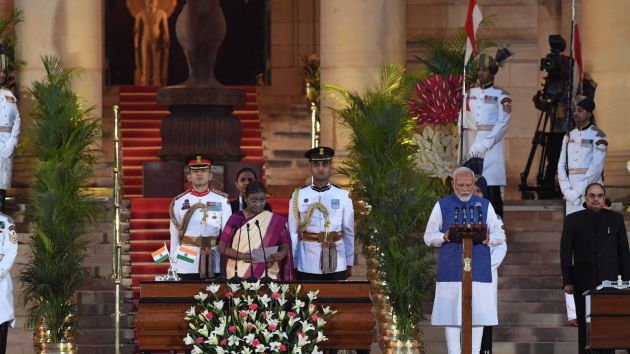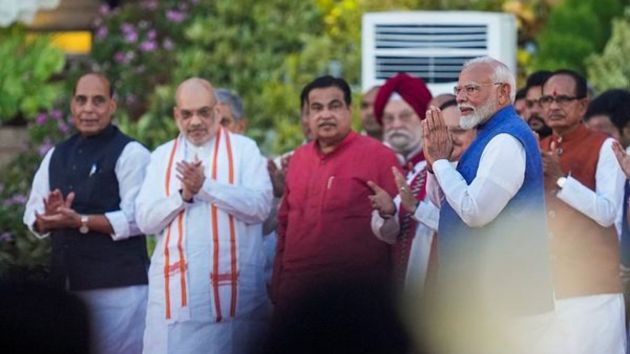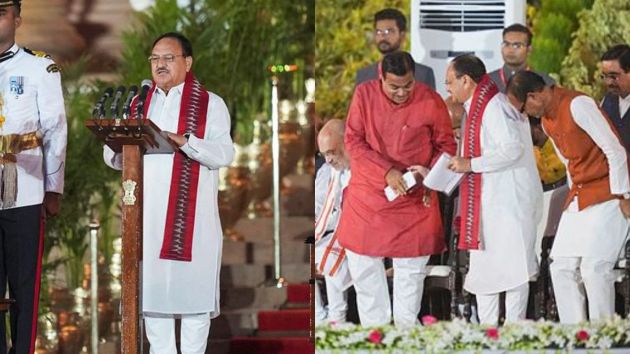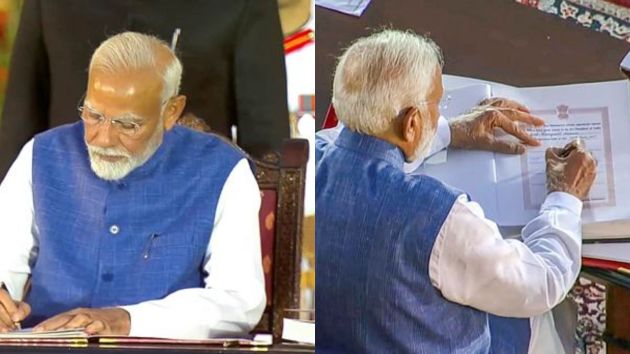Modi sworn in as PM for 3rd consecutive term; 5 allies get one Cabinet berth each
The 72-member Union Council of Ministers which was administered the oath of office by President Droupadi Murmu included 30 Cabinet Ministers and 5 Ministers of State (independent charge).
June 9, 2024 23:09 IST 1 / 9
1 / 9Narendra Modi was sworn in as Prime Minister at Rashtrapati Bhavan Sunday, only the second after Jawaharlal Nehru to secure a third consecutive term. (X/@rashtrapatibhvn)
 2 / 9
2 / 9The 72-member Union Council of Ministers, which was administered the oath of office by President Droupadi Murmu, included 30 Cabinet Ministers, 36 Ministers of State and 5 Ministers of State (independent charge). (PTI)
 3 / 9
3 / 9With the BJP no longer in majority in Lok Sabha and dependent on allies including TDP and JD(U), the NDA Council of Ministers signalled both continuity and change – veteran leaders Rajnath Singh, Amit Shah, Nirmala Sitharaman, S Jaishankar and Piyush Goyal were among 19 retained as Cabinet Ministers. (PTI)
 4 / 9
4 / 9Others back in Cabinet were Nitin Gadkari, Dharmendra Pradhan, Pralhad Joshi, Sarbananda Sonowal, Virendra Kumar, Giriraj Singh, Jyotiraditya Scindia, Ashwini Vaishnaw, Gajendra Singh Shekhawat, Kiren Rijiju, Hardeep Singh Puri, Mansukh Mandaviya, Bhupender Yadav and G Kishan Reddy. (PTI)
 5 / 9
5 / 9New entrants in the Cabinet included J P Nadda, whose term as BJP president ends this month, and former Madhya Pradesh Chief Minister Shivraj Singh Chouhan, former Haryana Chief Minister Manohar Lal Khattar, Gujarat BJP president C R Paatil. (PTI)
 6 / 9
6 / 9 7 / 9
7 / 9The five Ministers of State (independent charge) are BJP’s Rao Inderjit Singh, Jitendra Singh, Arjun Ram Meghwal (all three held the same position in Modi 2.0), Shiv Sena’s Buldhana MP Prataprao Jadhav and RLD’s Jayant Chaudhary. (PTI)
 8 / 9
8 / 9Modi's oath-taking ceremony featured a first-ever formal invitation to individuals from the transgender community, labourers, and sanitation workers. The 90 laborers and 30 sanitation workers contributed to the construction of the new Parliament complex. (PTI)
 9 / 9
9 / 9The NDA secured a majority in the Lok Sabha elections, winning 293 seats with the help of alliance partners. However, the Bharatiya Janata Party (BJP) itself fell short of a majority, winning 240 seats, a significant decline from its 2019 tally of 303. (PTI)











